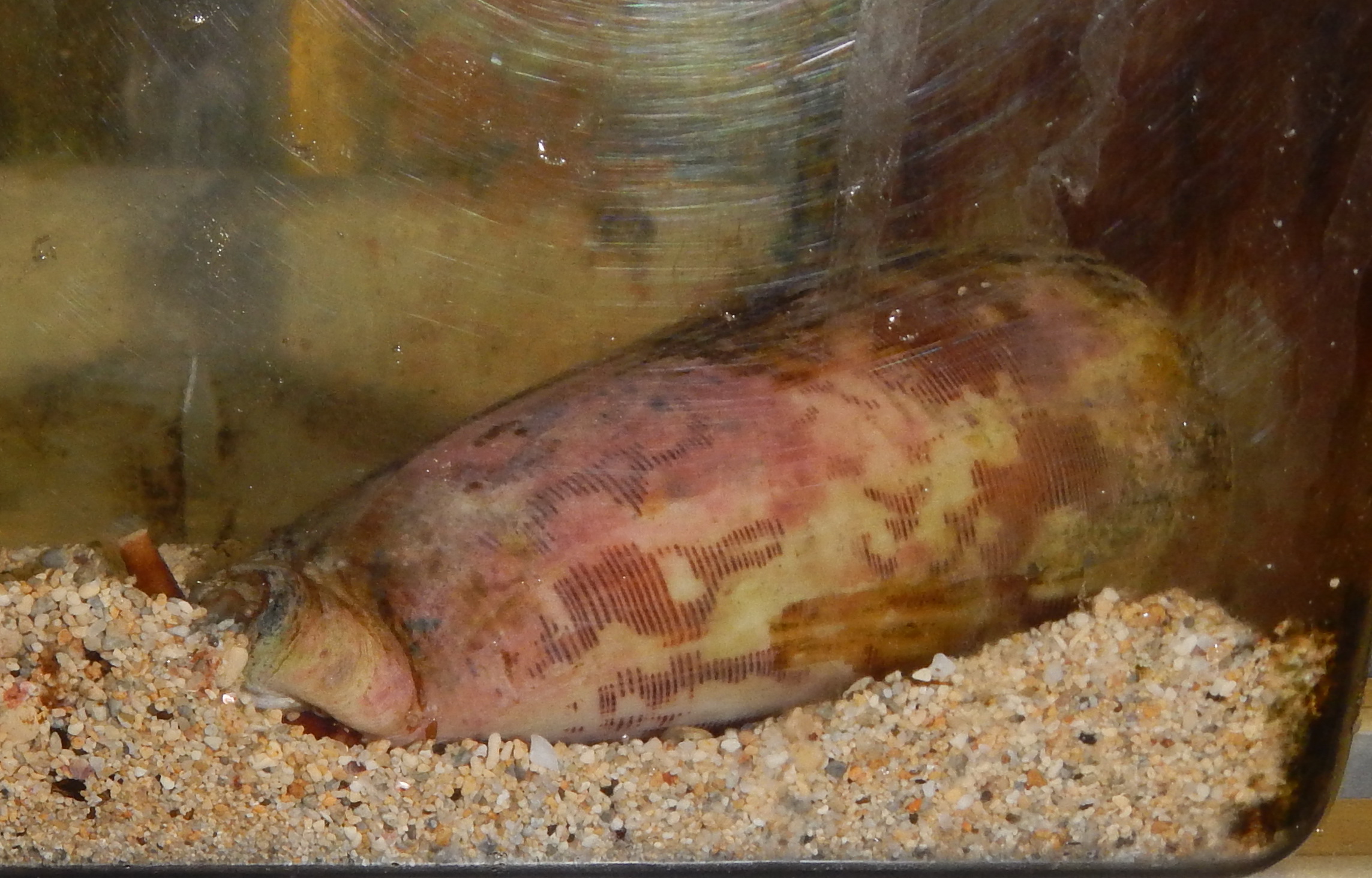Published in the Ocean Watch column, Honolulu Star-Advertiser © Susan Scott
June 30, 2014
Last week at UH-Manoa I met 45 cone snails, each living in its own saltwater condo. The healthy mollusks are safe from predators (rays and some crabs), receive catered meals with vitamin supplements, enjoy a regular cleaning service and occasionally get visits from a member of the opposite sex. If snails wore team shirts, this group’s would say “Life Is Good.”
The cone snails are the stars of biochemistry professor Jon-Paul (JP) Bingham’s research lab. There JP, his 11 graduate students and two undergrads study toxins in the snails’ venom.
 One of JP’s cone snails, Conus striatus. Siphon can be seen on the left.
One of JP’s cone snails, Conus striatus. Siphon can be seen on the left.
©2014 Susan Scott
While resting in their tanks or on the ocean floor, cone snails look harmless. All, however, carry concealed weapons, needle-sharp harpoons that shoot a cocktail of poisons so potent that some species can kill a human.
Most cone snail stings occur when people drop a live snail in a pocket or tuck one in a wet suit. No deaths have been reported in Hawaii from a sting, and most are mild. Even so, it’s safest to look but not touch.
But cone snails aren’t out to poke people. The creatures’ goal in injecting venom is to paralyze prey, either worms, snails (including other cones) or fish, depending on the cone species.
With more than 600 species, cone snails compose one of the largest families of marine snails in the world. Hawaii hosts at least 64.
Cone snails get their name from the shape of their shells, wide at one end, narrow at the other. Names such as leopard, marbled, oak and textile cone (all found in Hawaii) suggest the lovely patterns on some species’ shells.
After a cone snail dies, its shell often gets tumbled by waves and scoured by sand until all that’s left is the tip of the shell’s round wide end. When it has a hole in the center, we call it a puka shell.
Live cone snails can be hard to find because many species burrow in sand or rest in reef cracks during the day. At night, though, these predators hunt.
The snails find food by smell, waving their long flexible “nose,” called a siphon. (The siphon also directs water over the gills.) After smelling prey, the snail extends a long thin tube that can reach twice the length of the shell, and fires a harpoon connected to a venom sac. Like a disposable needle, the harpoon is single-use only and the animal grows replacements.
Each cone snail makes a blend of multiple poisons, called conotoxins, different in each species. The creatures deliver one kind of toxin for prey and another for defense.
The wide spectrum of conotoxins in each snail is of great interest in pharmaceutical and medical research due to their affect on nerves. This characteristic has the potential of tackling a variety of diseases.
Besides studying conotoxins, Bingham and his team are also working on cone aquaculture to enable researchers to raise their own snails.
Bingham, cone snails are no mere lab subjects. This upbeat biochemist admires cone snails’ remarkable hunting methods, the complexity of their venoms and the beauty of their shells.
“Amazing animals,” he said, smiling as we looked into the bubbling tanks of snails.
A “Life Is Good” T-shirt would suit JP, too.